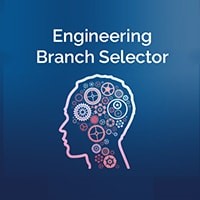KTET Category 3 Physical Science Question Paper You’re in the right place if you’re preparing for the Kerala Teacher Eligibility Test (KTET) and hoping to teach physical science. A necessary step for those who want to teach at the upper elementary and secondary school levels is the KTET Category 3 exam. This blog seeks to offer a comprehensive overview of the KTET Category 3 Physical Science question paper, covering topics such as question kinds, preparation strategies, and structure.
- Introduction: KTET Category 3 Physical Science Question Paper
- Download: KTET Category 3 Physical Science Question Paper
- Detailed Analysis of the Physical Science Question Paper
- Overview : KTET Category 3 Physical Science Question Paper
- Analysis of Previous Question Papers
- Conclusion: KTET Category 3 Physical Science Question Paper
- FAQs: KTET Category 3 Physical Science Question Paper
Introduction: KTET Category 3 Physical Science Question Paper
Teaching is a noble profession, and in Kerala, the KTET ensures that only the best candidates make it into the classrooms. KTET Category 3 is particularly important for those looking to teach Physical Science to higher classes. This article will walk you through the essentials of the KTET Category 3 Physical Science exam, helping you to prepare effectively and succeed.
Download : KTET Category 3 Physical Science Question Paper
Overview : KTET Category 3 Physical Science Question Paper
What is Category 3 of the KTET?
For applicants who want to teach grades 8 through 10, KTET Category 3 is intended. Making sure teachers are well-versed in the disciplines they will teach—Physical Science, Mathematics, and other important areas—is the main goal.
Qualification Standards
Candidates must possess a BA, B.Sc., or B.Com degree along with a B.Ed from an accredited university with a minimum of 45% marks in order to be eligible for KTET Category 3. Furthermore, candidates have to be citizens of India by birth.It’s
Exam Structure and Format
There are 150 multiple-choice questions in the KTET Category 3 exam, which are broken down into three sections:
40 questions covering teaching aptitude, theories of learning, and adolescent psychology
Thirty questions in Malayalam, Tamil, Kannada, and English
Subject-Specific Areas: Mathematics and Physical Science – 80 questions
The exam will go for two hours and thirty minutes in total.
Detailed Analysis of the Physical Science Question Paper
Detailed Analysis of the Physical Science Question Paper
Structure and Pattern
The questions in the Physical Science part assess the candidates’ knowledge and comprehension of scientific ideas, theories, and applications. The majority of the problems are conceptual in nature and call for a thorough comprehension of subjects like modern physics, chemistry, thermodynamics, mechanics, and electromagnetic.
Types of Questions
- Multiple Choice Questions (MCQs):These inquiries assess both conceptual and factual knowledge.
- Application-Based Questions: Candidates must be able to address problems using scientific concepts.
- Data Interpretation: Involves analyzing scientific data and drawing conclusions.
Distribution of Marks
Out of the total 150 marks for the paper, 80 marks are awarded for the Physical Science portion. The scores are split equally across the different Physical Science topics to ensure a thorough evaluation of the candidate’s understanding.
| Topic | Number of Questions | Marks |
|---|---|---|
| Adolescent Psychology, Theories of Learning, and Teaching Aptitude | 40 | 40 |
| Language (Malayalam/Tamil/Kannada/English) | 30 | 30 |
| Subject-Specific Areas (Physical Science/Mathematics) | 80 | 80 |
| Total | 150 | 150 |
Preparation Tips and Strategies
Study Materials and Resources
- Textbooks: Use NCERT textbooks for Physics and Chemistry as they cover the basics thoroughly.
- Reference Books: Books by authors like H.C. Verma for Physics can be very helpful.
- Online Resources: Websites like Khan Academy and Coursera offer free courses and tutorials.
Time Management Create a study schedule that allocates time to each subject area. Focus on understanding concepts rather than rote learning. Practice timed exams to increase accuracy and speed.
Conclusion: KTET Category 3 Physical Science Question Paper
Taking the KTET Category 3 Physical Science test might lead to a fulfilling career as a teacher. You can increase your chances of success by being aware of the format of the exam, practicing hard, and using your time wisely. Recall that perseverance and diligence are essential. Wishing you luck!




















